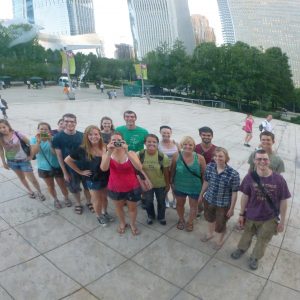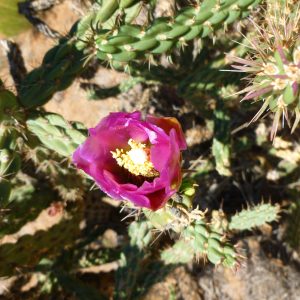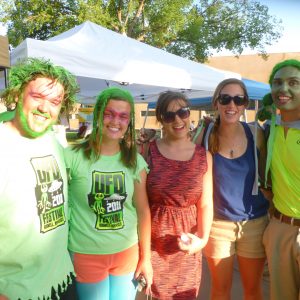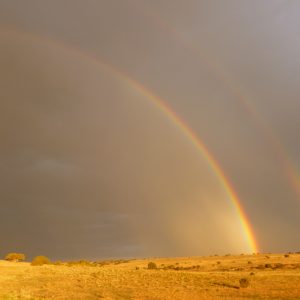
Laurie and me after collecting Ceanothus seeds, we had a lot more then what is seen in the photo.
I have coined Laurie the Seed Queen because of her extensive experience with seed collecting, and she has coined me as the Lupinator because of my skills collecting Lupine seeds. These nicknames we’ve given each other are evidence to how great the CLM Internship was. After about five months of seed collecting I have learned a lot and have made some great friendships! Not just with the Seed Queen Laurie, but with several other colleagues!
Before I started at the San Diego Zoo Institute for Conservation Research I had had some field experience, but it was different compared to what I’ve done over these last few months. It has been amazing foraging for San Diego native wildflowers, perennial shrubs, subshrubs, etc. When we do find a plant of interest we make herbarium vouchers of the flowers, which is another great experience I have gained through the internship. I learned how to make proper plant clippings for the plant press so that vouchers can be made for the herbarium. I was very happy to learn this, although I would have been even happier had I the chance to help mount the specimen in the formal way, but that is done at a later time when I wont be around. Anyhow, once we’ve made a voucher specimen we monitor the target population to keep track of when the seeds will be ready for gathering. I have enjoyed collecting seeds, so long as they weren’t plants from the Asteraceae family because those usually tend to be very small annuals that require lots of bending down to collect the seeds and that can be hard on the back. I prefer collecting seeds from shrubs because they usually don’t require too much crouching down. Even so, I liked getting experience collecting seeds from a variety of different plants, as well as a variety of different sites. San Diego County is believed to have the most diverse plant flora in the country! Meaning very diverse regions, which means exciting new things to see majority of the time.
I greatly enjoyed taking pictures of the flora we vouchered, as well as ones we didn’t. It reminded me of my love for photography and I have now taking up photography as a hobby of mine. I plan to submit some of my pictures to some science magazines, and will carry-on doing this when I travel for graduate school.

Calycoseris parryi with two flowers buds

Calycoseris parryi flower

Calycoseris parryi - I love the patterns on the sepals
This internship exposed me to a new world of science and I loved it!

Penstemon centranthifolius flowers

Salvia mellifera - Black Sage with a bee feeding on the nectar

At the top of El Cajon Mtn. admiring the view
In the beginning of Spring we started to monitor our field sites more frequently just in case new flowers would pop up. These were the days I found most exciting because there’s no telling what Mother Nature will surprise us with. For example, a couple of months ago when we first started collected seeds from our San Vicente View site we were aware of what plants were and weren’t there, but one day I spotted a blue flower Laurie and I hadn’t seen before and neither of us knew what it was. Naturally we looked in our San Diego County Native Plants book to determine what it was, and it turned out to be a Delphinium! Either D. hesperium ssp. cuyamacae or D. parishii ssp. subglobosum, they are both on the California Native Plant Society Inventory of Rare and Endangered Plants.

Delphinium sp. at San Vicente View site
Field days, although they usually were very long days, they were my favorite part of the internship! I also enjoyed the germination tests. Laurie would pick which seeds would be pulled out of storage for germination tests and which germ test would be used. Then the seeds would be put in the germinator for four weeks, and every Friday I would have to check on the seeds’ progress. There were data sheets that needed to be filled out that showed how the seeds progressed over the four weeks depending on if they germinated or not. I liked checking the seeds every Friday because I was able to see their progression.
Throughout my internship I have also been able to see cool things aside from the beautiful native flora, as well as help out with other projects related to wildlife restoration and conservation. I have learned how much hard work and people effort it takes into helping endangered species, be it animal or plant. I plan to continue to participate in conservation and rehabilitation projects when I move to Ohio for graduate school at Miami University. Thanks so much CLM, Chicago Botanic Garden, and the Applied Plant Ecology Division at the Institute for Conservation Research!

A moth of some sort.

This is a non-Native butterfly that was at the San Diego Zoo - Safari Park Butterfly Exhibit




























